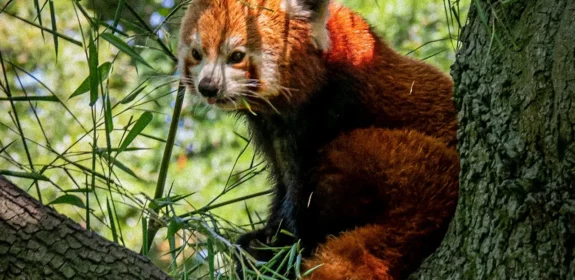Introduction
Mount Everest, the highest mountain top in the whole world, is more than 8,848 meters above sea level. By its stature, it dares to defy every mortal who climbs to its heights. The mountain is known to have extreme environmental conditions, testing life.
Temperature drops as low as -60 °C, where the air is very thin and oxygen is low. Scorching winds blow over its slopes, making its place very hostile to live in. Nevertheless, this has not been without its adherents, and some tough animals have adapted to these conditions perfectly.
Animals and plants on Mount Everest face constant stress but have developed remarkable adaptations. They survive by coping with low oxygen, extreme cold, and scarce food sources. These secrets of survival allow them to survive in such an extreme habitat.
This guide discusses what animals reside in Mount Everest and how they somehow survive there. These animals prove the exceptional strengths of nature at extreme elevations on the planet, which include tiny insects to large animals.
Comprehending these animals enables us to understand the beauty of the finesse of life within harsh conditions. Their presence on the Everest denotes extraordinary biological adaptations as well as stories of survival in one of the harshest locations on the planet.
The Harsh Environment of Mount Everest
The extreme altitude of Mount Everest, which stands at more than 8,848 meters, means that the oxygen content may plummet. Such conditions make it hard to breathe in this thin air, causing major problems to both human and animal life living at such altitudes. To avoid extinction, it has to adjust its special adaptations.
Everest temperatures fall to well below freezing temperatures to reach -60 degrees centigrade and below. The winds are so frozen and relentlessly blow across the slopes, adding to the coldness of the environment and increasing the hostile nature of the environment to living creatures trying to survive in such harsh environments.
Very little food is available at high altitudes of Everest, restrictions on food resources for animals. The tough terrain and rocky slopes also present a challenge to movement and access to resources. These challenges pose a threat that only a particular group of species with special survival skills can live in the environment.
Because of the hurdles at high altitude or extreme elevation, the only animals that persist at the top of the world are animals that have very specific adaptations to survive. Those adaptations provide them the ability to withstand coldness, limit energy expenditure, and find food. Animals that live on Mount Everest endure where other life forms cannot.
Animals That Live on Mount Everest
Snow Leopard
The snow leopard is one of the main predators among living beings on Mount Everest. It is a very elusive animal, and it dominates the Himalayan mountain ranges by its sharp hunting instincts and striking presence despite bad weather.
Thick fur keeps it warm against cold, and the large paws serve as snowshoes, preventing it from sinking in deep snow. A long tail gives stability on steep rock as well as warmth when resting or sleeping by hugging its body.
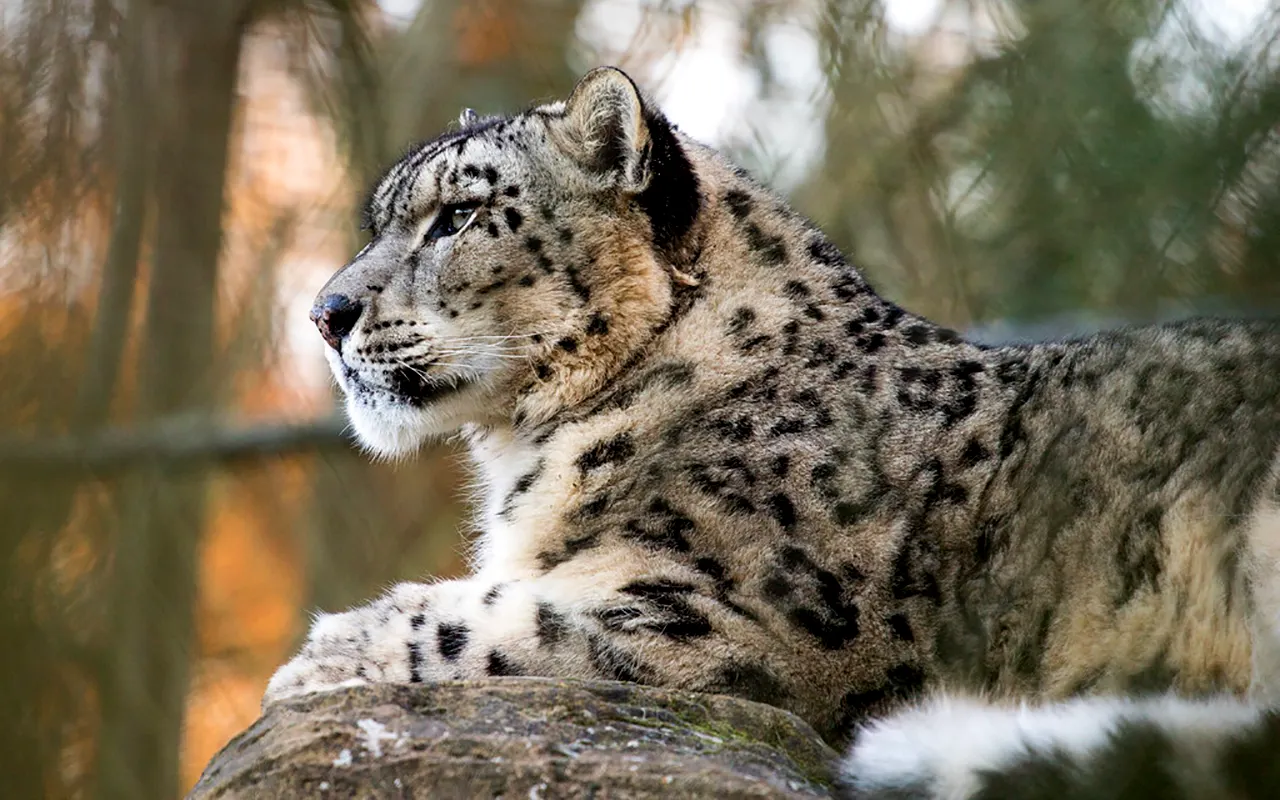
The secret to the survival of the snow leopard is to be invisible and patient. It preys on blue sheep or bharal with the help of camouflage and silent stalking in the rough and rocky mountains of Everest, so that it can be assured of being the superior predator at this high altitude.
Himalayan Tahr
The Himalayan tahr is a goat like herbivore that is common to the animals inhabiting Mount Everest. It lives in rocky cliffs and steep slopes, being able to handle these inhospitable environments that other animals can hardly dare to venture into
It has powerful, acute hooves, which give it good traction on rocks and cliffs and an ability to move easily uphill. The large, thick, woolly coat protects it against the cold conditions and the harsh winds at the high altitude areas, which are necessary as a means of survival.
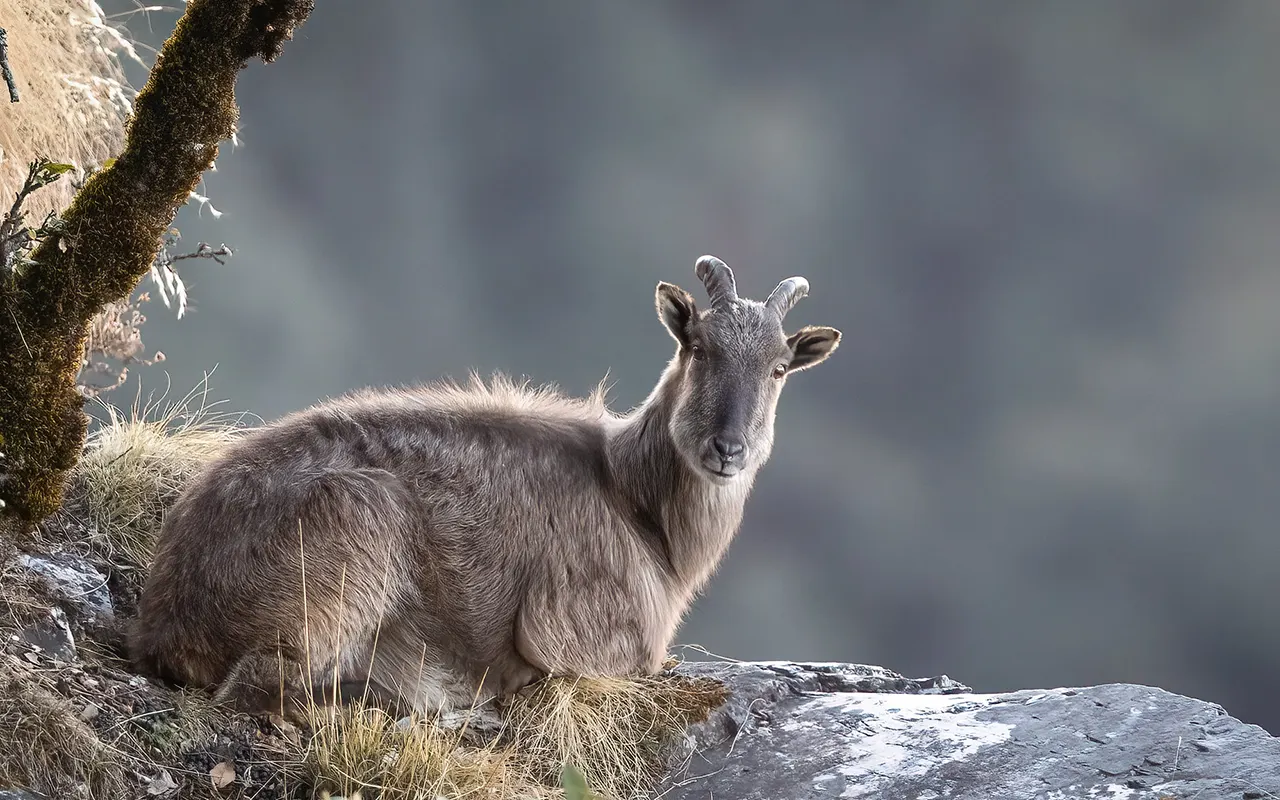
What made the tahr survive is its ability to feed on the sparse vegetation of high altitude. It is a grass, shrub, and herbivore with the ability to survive during long winters. This diet enables it to last long on the energy provided, even though the surroundings of Everest are extreme.
Musk Deer
Musk deer are among the animals that habitat Mount Everest, but are very shy and elusive. They prefer not to get into contact with humans, making a silent walk through the forests and subalpine areas surrounding the low points of the mountain.
Their skins are camouflaged and of small size, thus giving them protection due to their ability to camouflage with bushes and grass. This cryptic color is necessary in the predator-saturated area of the Himalayan region.
The survival secret of musk deer is that they mainly feed in the morning hours (at dusk) when there is not much activity from the predators. This habit lowers their exposure to danger and supplies enough food to meet their needs.
Himalayan Monal (Danphe)
The Himalayan Monal is the national bird of Nepal that adorns the mountains of Everest with its colorful plumage. Males have colorful feathers and brilliant colors that reflect the contrast of the rough mountainous landscape around them, thus attracting mates and marking their territory.
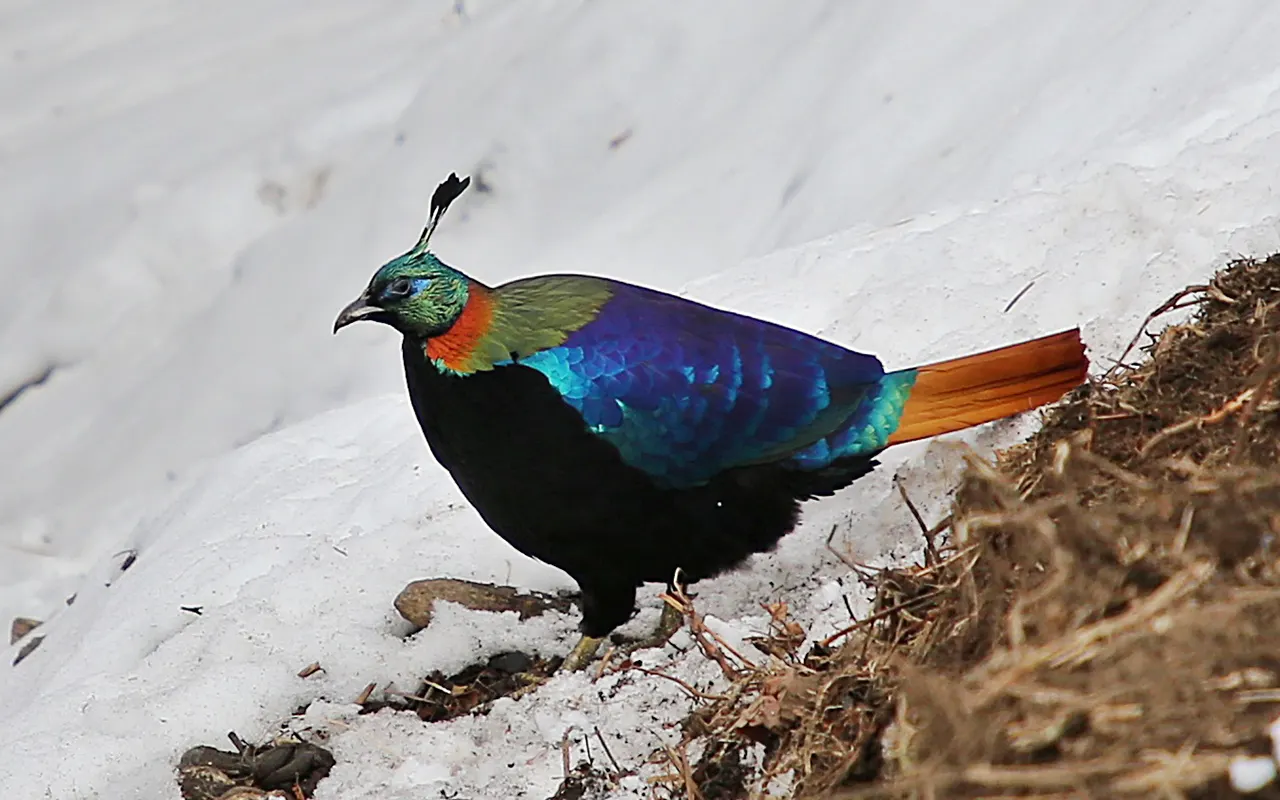
It can fly very rapidly due to its powerful wings over steep slopes and in valleys. The monal has such powerful muscles that can help this bird to escape danger and traverse the usually punishing and windy conditions present on the mountains of Everest with its alpine regions.
The Himalayan Monal’s survival trick is to dig into snow to feed on roots and insects. This type of foraging approach enables it to find food in winter, even though food is limited on Mount Everest.
Yak (Wild & Domestic)
The yak plays an essential role in the life of both animal and human on Mount Everest. Wild yaks live in mountainous areas, whereas domestic yaks serve the local people by helping them to transport heavy loads up in the mountains.
Large duvets are there to keep out the biting cold and harsh winds. Also, they have large lungs that can take up a lot of oxygen in the thin air, which is why yaks can reside and even flourish where other mammals would do poorly.
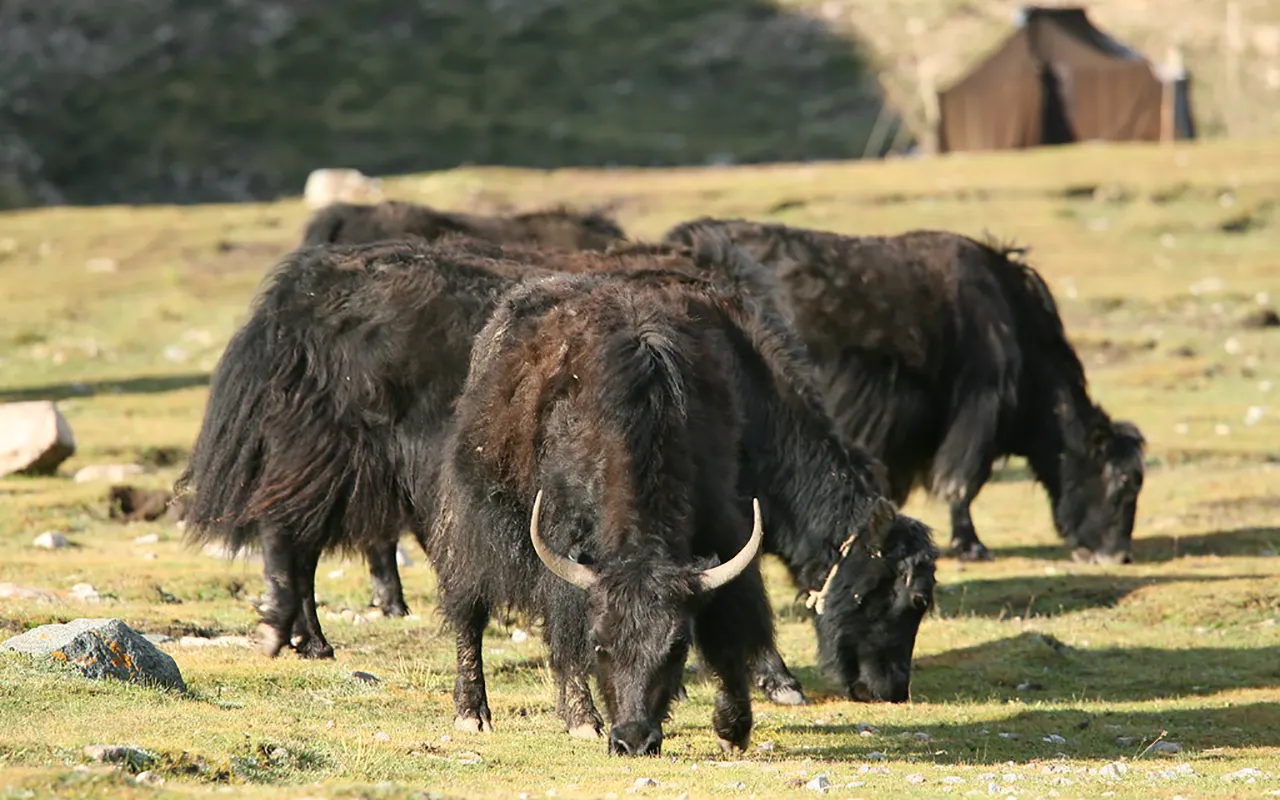
The key to the survival of the yaks is that they feed on the scarce alpine grass, and even while carrying heavy loads on behalf of human beings. This two-in-one role supports their nutrition needs and significance, which makes them of enigma to animals living on Mount Everest.
Red Panda (lower Himalayan forests)
Although red pandas do not inhabit the peak of Everest, they are seen in the lower forests of the Himalayas. This unknown animal is quite an interesting component of the Everest Mountains, as this animal is used to much cooler conditions and ways, and is found in the more forested areas around the base of the mountains.
The Red panda also possesses semi-retractable claws and an especially large, bushy tail. The claws can climb and grasp the slippery trees, and the tail offers balance and helps to keep the animal warm, a requirement to navigate through the cold, thick forests near Everest.
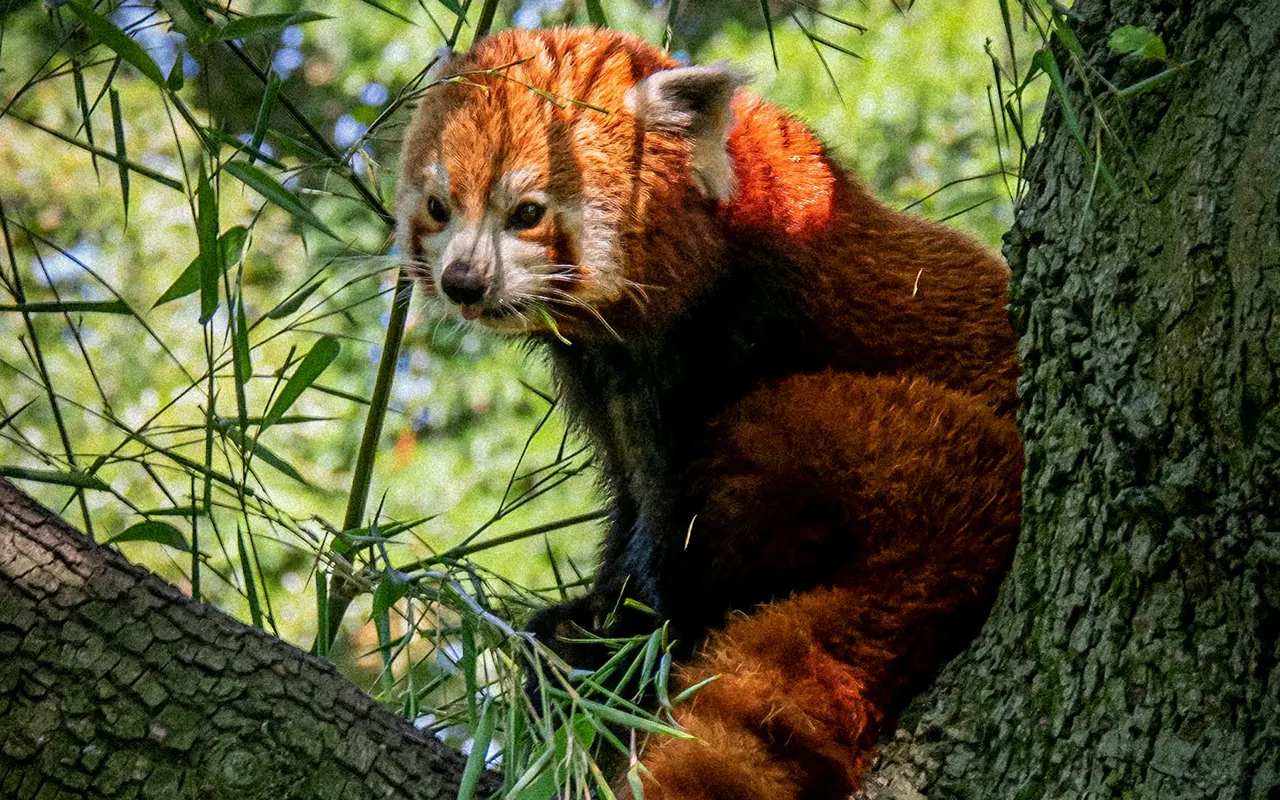
They have a survival secret that they eat a diet largely comprised of bamboo, and they are nocturnal creatures. Near-night feeding aids red pandas to avoid predation and competition, thus becoming effective stewards of the diversified habitat around Mount Everest.
Insects & Small Creatures
Jumping spiders have also been found near the summit (among the smallest living creatures that live on Mount Everest). Life at high altitude is tough, yet these minuscule arachnids find their path to existence in harsh conditions, where insects in general are rare.
They have a survival trick that helps them to escape their predators; this trick is shelter between rocks and crack crevices. These sheltered zones provide microhabitats that tend to be warmer, and the plants can survive the adverse conditions of the near-Everest peak.
Jumping spiders resort to capturing small insects that are blown by other elements or trapped in crevices. This diet of opportunity enables them to maintain energy levels despite the lack of food matter, and the size is one of the smallest yet fascinating inhabitants of Everest.
Survival Secrets of Everest’s Animals
Those that inhabit Mount Everest have thick fur and good layers to withstand the cold. Such adaptations help to keep body heat, avoid frostbite, and survive long, cold nights in one of the coldest regions of the planet.
Mount Everest presents low oxygen levels; therefore, specialized lungs and blood cells make animals that inhabit the mountain accustomed to this condition. The improved volume of their lungs and oxygen-bearing red cells enables them to breathe deeply and have the stamina in the thin air.
Most animals that inhabit Mount Everest have seasonal or nocturnal habits because it saves energy. Activities in the cooler or safer hours help them to avoid predators as well as dangerous weather, thus increasing their chances of survival throughout the year.
There are some animals that travel to lower altitudes during winter seasons when the environment is too harsh. The seasonal migration of animals that inhabit Mount Everest can reach food and warmer conditions and move to lower altitudes that are more favorable in other seasons.
Feeding modes are of great relevance to the animals inhabiting Mount Everest. They eat plants that are difficult to get in the mountains or kill their prey, especially in this harsh environment, which they frequently adjust to with specialized diets and effective foraging skills.
Human & Animal Connection in the Everest Region
Yaks are one of the most significant animals that live on Mount Everest, and the species is essential to the existence of Sherpas. They pull heavy loads and transport supplies, provide milk and wool, and, therefore, support the economy of local people.
Reflectively, climate change is leading to increased challenges to the conservation of animals that live on Mount Everest. The change in temperature changes habitats, and increasing tourism brings in pollution and disturbance, thus threatening the sensitive balance of this very delicate and unique plant in the mountain.
Some animals migrate to lower altitudes in the winter season because conditions are harsh. This seasonal migration enables wildlife that inhabits the mountain Everest to have greater access to food and warmer conditions, moving back to higher altitudes in much more hospitable seasons.
Environmental awareness and sustainable tourism are perfect essentials in preserving the animals that inhabit Mount Everest. With reduced human activity and the introduction of environmentally friendly alternatives, we as individuals will be able to ensure that this famous region can be preserved into the future for people and the wildlife that lives there.
Frequently Asked Questions
What animals live on Mount Everest?
Mount Everest is home to snow leopards, Himalayan tahr, musk deer, yaks, and Himalayan monal, as well as a variety of insects.
How do snow leopards survive on Mount Everest?
They persist because of thick fur, large paws to help navigate snow, stealth hunting, and portability with a long tail.
Are there birds on Mount Everest?
Indeed, there are high-altitude birds, such as the Himalayan monal, that find their homes in the mountains of Everest, as well as in its forests.
Do yaks live on the summit of Everest?
No, yaks cannot stay at an extreme height like the summit of Everest because the conditions are extreme.
What insects live at the top of Mount Everest?
There are jumping spiders and some hardy insects that survive near the summit in crevices in rocks.
Are red pandas found near Everest?
Yes, red pandas inhabit the lower forest regions around Mount Everest, but not the peak.
Which is the most dangerous animal on Mount Everest?
The snow leopard is regarded as the most lethal predator in the Everest region.
How do animals adapt to low oxygen at high altitudes?
They are adapted to take full advantage of available oxygen because they possess specialized blood cells and lungs that ensure that they only use the available oxygen with great efficiency.
Do humans rely on animals in Everest expeditions?
Yaks and other animals are essential to humans to transport supplies and aid during the expeditions.
Is wildlife on Everest endangered?
Yes, a lot of the species high up in Everest are threatened by climate change, loss of habitats, and rising tourism.
Conclusion
Mount Everest is not simply a climbing problem; some very hardy animals have developed to live in this extreme environment. These animals can live in cold, sparse air and an impossible landscape.
The secret to the survival of animals on Everest brings out the amazing adaptability of nature. These adaptations include piles of fur and special lungs, as well as unique behaviors, so fascinating and much admired in their ability to survive in extreme environments.
It is necessary to guard the unique wildlife in Everest in order to maintain this delicate nature preserve. Sustainable actions will make sure that these miraculous animals will continue to live and preserve the natural heritage of the mountain to be appreciated by future generations.

